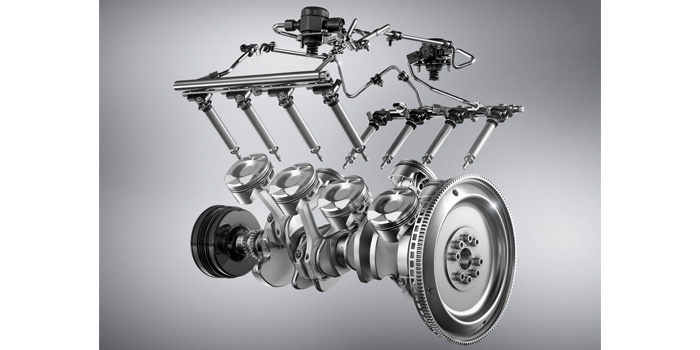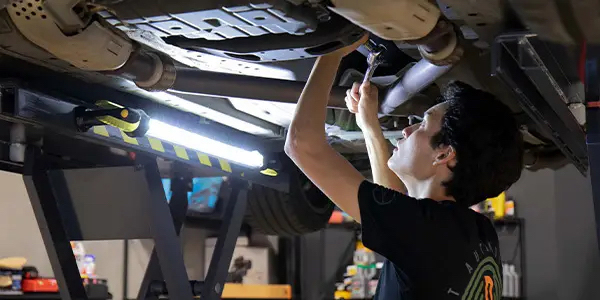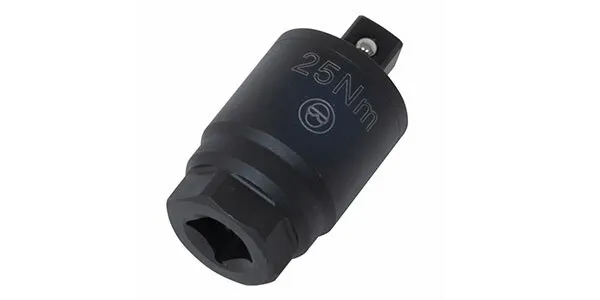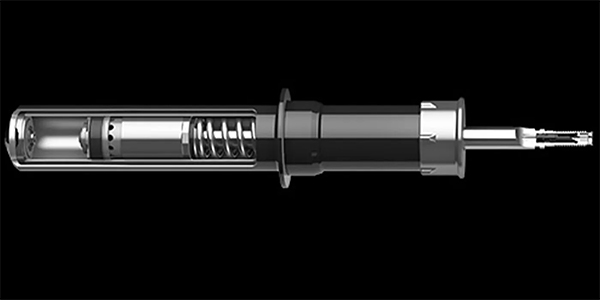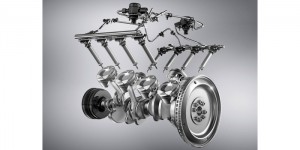 As federal emissions standards continue to drive automotive technology, direct injection has become a preferred method of fuel injection in both gasoline and diesel applications. Better fuel economy, increased power and reduced emissions make this design attractive to manufacturers, despite its complexity and initial cost.
As federal emissions standards continue to drive automotive technology, direct injection has become a preferred method of fuel injection in both gasoline and diesel applications. Better fuel economy, increased power and reduced emissions make this design attractive to manufacturers, despite its complexity and initial cost.
Indirect fuel injection refers to any fuel injection system where the fuel is mixed with the air charge before entering the cylinder. Most of the gasoline fuel injection designs we are already familiar with are indirect types. In throttle body (TBI) applications, the fuel mixes with the air charge before entering the intake manifold, much like a carbureted vehicle. The air-fuel mixture is then distributed through the intake runners to each cylinder. This arrangement is referred to as a “wet” intake, due to the presence of fuel in the air charge. While the TBI system has advantages over carburetion, it shares the same inconsistency of fuel delivery between cylinders. On the other hand, multiport fuel injection (MFI) introduces the fuel just before the air charge reaches the intake valve, giving a more precise “shot” of fuel at each cylinder. MFI has been the preferred injection system for more than two decades, but is slowly losing ground to direct injection applications.
Direct injection, as its name implies, atomizes fuel directly into the cylinder. This allows for even more precise fuel metering than current MFI systems, and fewer emissions. Gasoline direct injection (GDI) also allows for higher compression and increasing power output even from smaller displacement engines. Characteristics of the cylinder head design, as well as injector timing and spray pattern, allow for leaner mixtures and increased fuel economy across a range of driving conditions.
The GDI fuel system operates at very high pressure (2-3,000 PSI is common). Such pressures are necessary because fuel may be injected into the cylinder during the compression stroke, rather than being swept into the cylinder only during the intake stroke. To achieve this, the GDI system relies on a secondary mechanical fuel pump to boost the fuel rail pressure. A traditional in-tank fuel pump assembly provides fuel to this secondary pump, so a failure in the low-pressure part of the system may also affect operation of the high-pressure components. The GDI system is governed by the Powertrain Control Module (PCM), which orchestrates the inputs from several sensors to achieve optimal performance in three distinct modes of operation: An ultra lean burn mode for maximum fuel economy at light loads, a stoichiometric mode for nearly perfect combustion at moderate loads and a full power mode that sacrifices a little fuel economy for heavy loads and acceleration. Depending on the mode, the PCM may command the injector to open multiple times during a single combustion cycle, so it must cycle much faster than a traditional injector. The pulse width of a GDI injector may only be between one and five milliseconds, compared to between five and 20 milliseconds for a MFI injector. This rapid cycling is achieved by using an injector design commonly used with diesel direct injection (DDI), known as the piezoelectric injector. It is more responsive and faster opening than a traditional solenoid-type injector, even at high fuel pressures. Like their diesel counterparts, GDI injectors also are exposed directly to the heat and pressure of the combustion chamber, so durability of design is another key element.
Given the success of diesel direct injection in the U.S. light truck market (Cummins, Duramax and Powerstroke engines all use DDI technology), it is not surprising that GDI vehicles are predicted to account for nearly half of new vehicle sales by 2016. The capabilities of GDI technology fit nicely with the widespread interest in small displacement, turbocharged engines that have excellent fuel economy and respectable power output. CM

